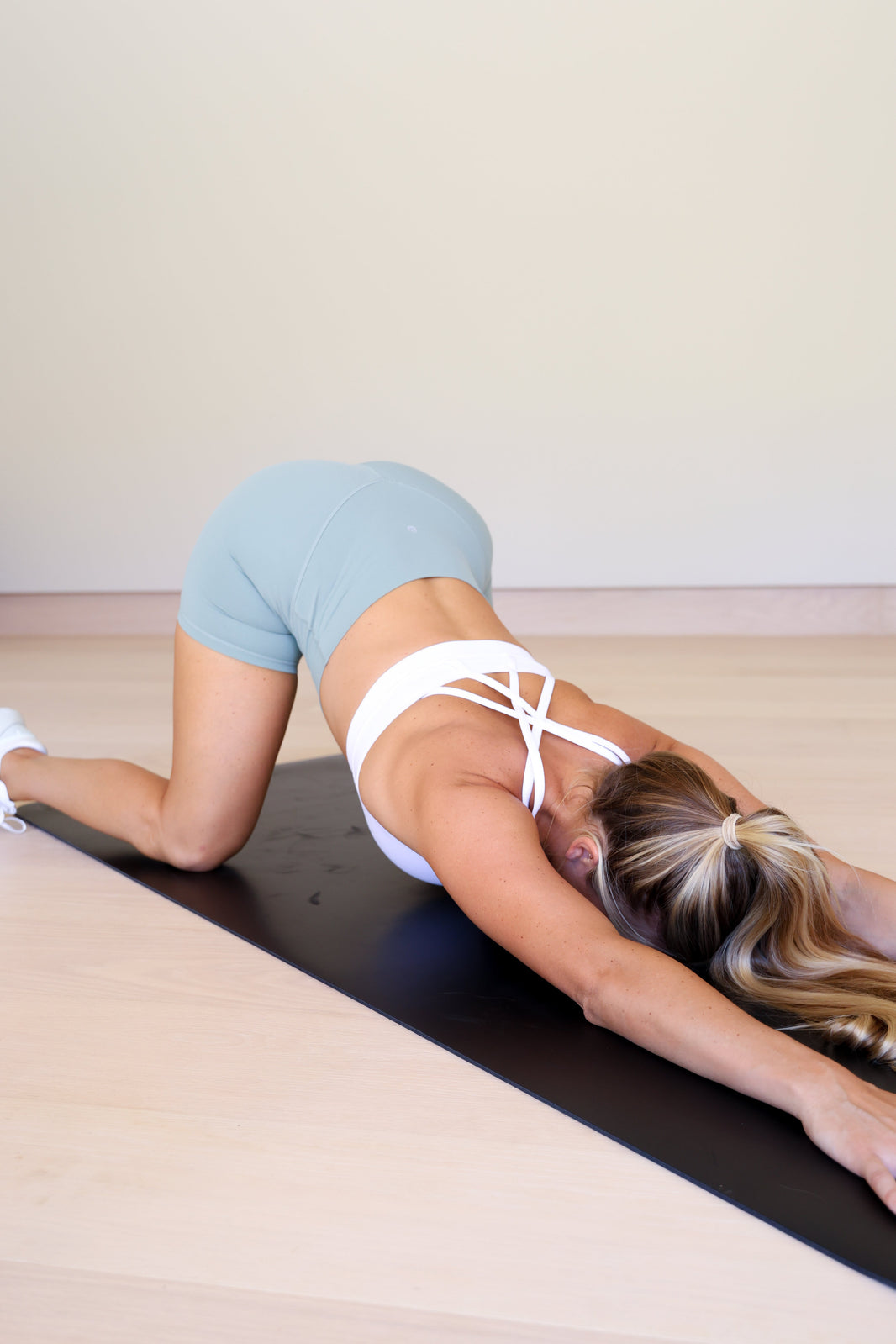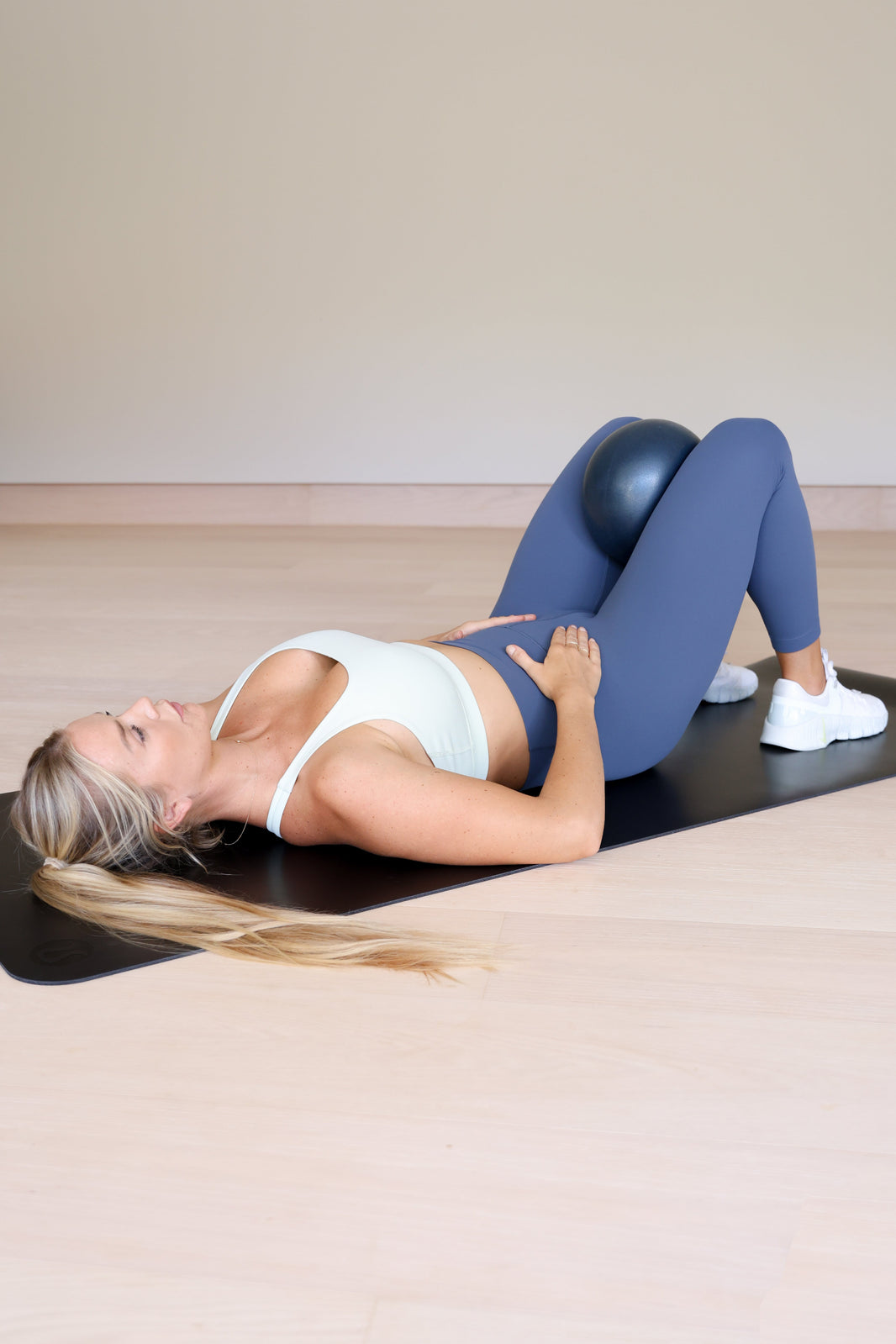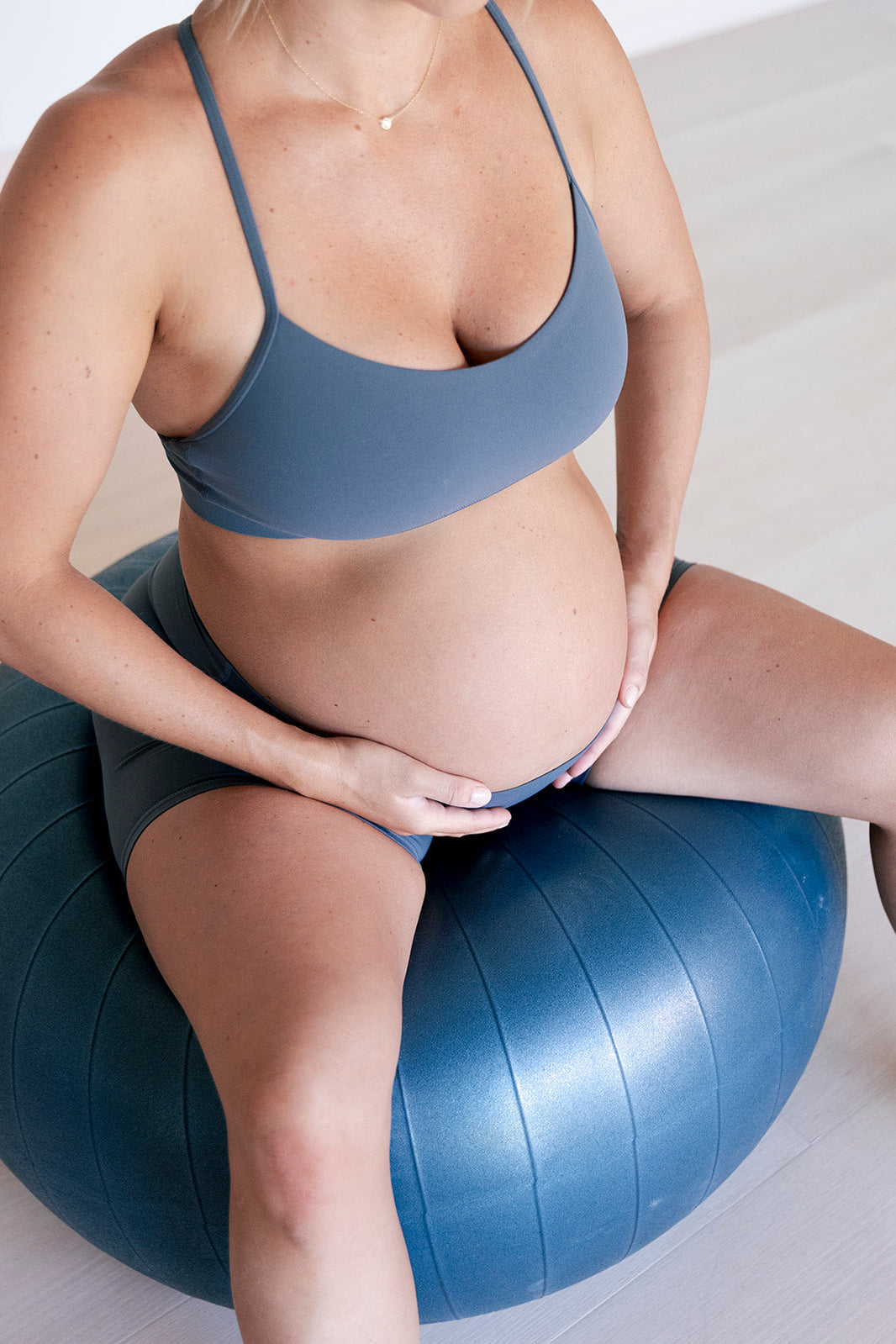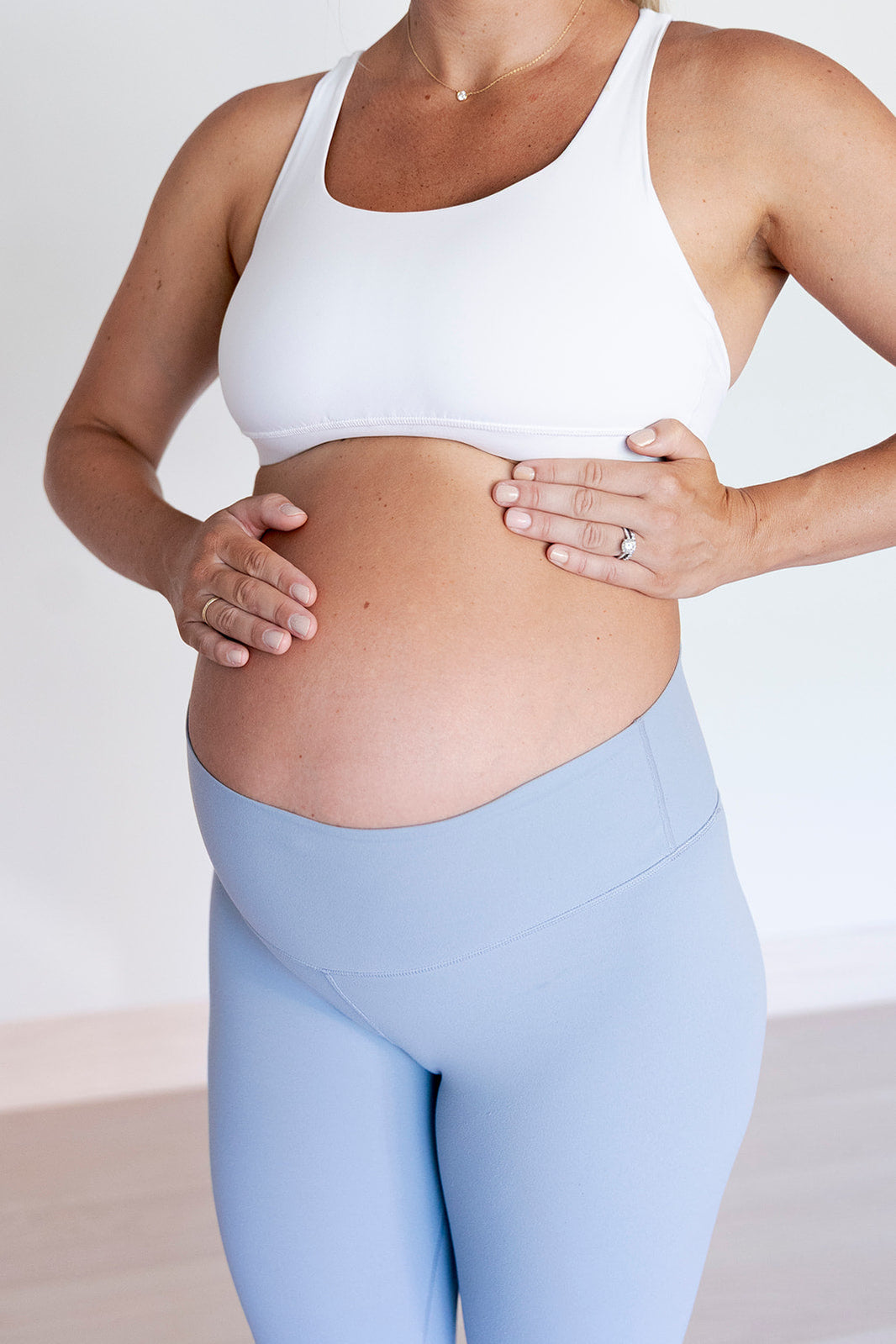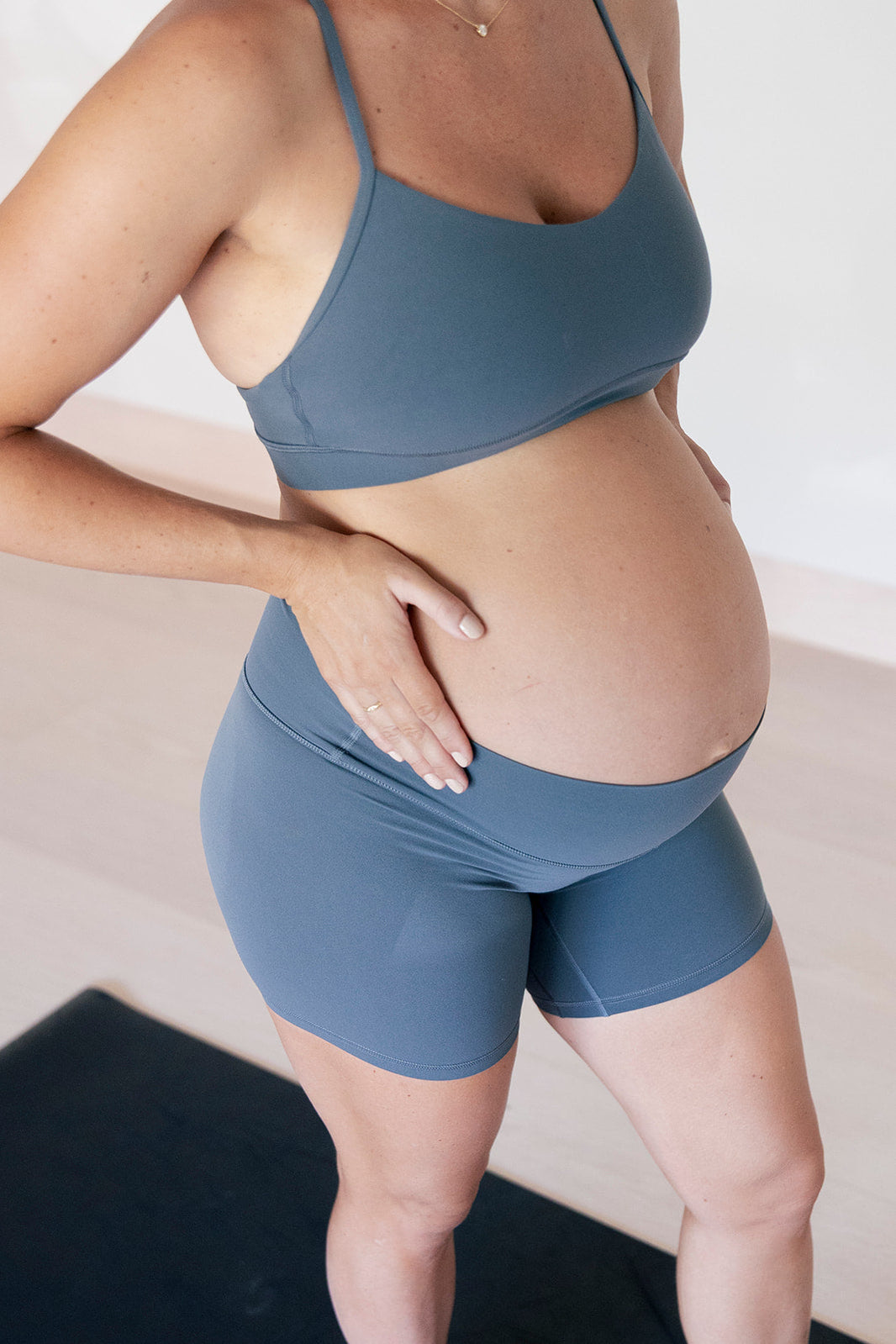So, you’re currently pregnant and still working out as you did pre-pregnancy and want to learn about if you need to change anything with your training? You have a healthy pregnancy so far, but now you’re considering a more focused prenatal fitness program to support your changing body and growing baby. You might be unsure where to begin or which advice to follow—some people tell you to do kegels daily, while others say to stop core work altogether and focus on relaxation. It can be overwhelming to know what’s best for both your body, your baby, your strength and your pelvic floor health.
Let’s walk through the most important elements of a well-rounded prenatal fitness program and discuss some important things to consider as you are training through pregnancy! We will discuss important ways to protect your core and pelvic floor muscles while maintaining fitness and moving into preparing for birth.
During pregnancy, your body undergoes a series of changes to accommodate your baby. Your abdominal muscles are stretching, your pelvic floor carries added weight, and your posture shifts as your center of gravity changes. With all of this happening, your exercise program should be designed to support these shifts, allowing you to maintain strength and stability of your deep core and pelvic floor musculature, managing intra-abdominal pressure, and allowing for proper postural strengthening without adding excessive strain to your pelvic floor.
Learning the Pelvic Brace
One of the most foundational skills for prenatal fitness is the pelvic brace. This technique helps activate and coordinate your core and pelvic floor muscles to support and protect your body during movement.
A pelvic brace is a co-contraction of the pelvic floor and the transverse abdominis (deep core) muscles. By engaging these muscles together, you can create a strong base and better intra-abdominal pressure management that supports your back and prevents pressure from pushing down on your pelvic floor. This skill is especially valuable during exercise and daily activities involving lifting or carrying. Maintaining this brace throughout pregnancy is important not only for protecting your back but also for reducing pressure on the perineum, which could otherwise strain the ligaments that support your pelvic organs and weaken your pelvic floor muscles.
Start practicing this pelvic brace with simple stability exercises like bird dogs or dead bugs. These moves can help you engage your core and pelvic floor muscles in a safe, controlled way and prepare you to engage this pelvic brace in more intense, multi-joint compound movements.
Using Breath to Support Your Movements
Breathing is another essential part of building a strong prenatal fitness foundation and can actually help you facilitate your pelvic brace in a stronger and more functional way. During pregnancy and even throughout life, your diaphragm, core, and pelvic floor work together as a team to stabilize and support your body. Proper breathing can help you engage these muscles in a way that’s safe and effective.
When thinking about the relationship of our pelvic floor muscles and diaphragm, we want to think of them mirroring one another. As we inhale, our diaphragm drops and our pelvicfloor muscles expand and lower slightly and as we exhale, our diaphragm lifts up and towards our head and our pelvic floor muscles will then contract and lift up and in. The fascial connections of our deep transverse abdominis into our pelvic floor muscles help our core and pelvic floor muscles to also work together. As we are thinking of pulling in our belly button into our spine, or lightly drawing our 2 front hip bones together to engage our deep core, we should also be having a light squeeze and lift through our pelvic floor muscles. This relationship also works vice versa, meaning as our pelvic floor muscles squeeze and lift with our exhalation, we should be getting tensioning and pulling in of our deep transverse abdominis muscles. See, team work, makes the dream work! So let’s think about this just with breath…
• Exhale for Pelvic Brace Activation: As you exhale, focus on engaging your deep core and pelvic floor muscles. You can do this by imagining like you are stopping gas from escaping, then zipping up to imagine stopping the flow of urine from coming out,and then zipping all the way up as if zipping up pubic bone to belly button. This is particularly useful during the exertion phase of an exercise, like pushing up from a squat or lifting during a deadlift. Using your exhale to initiate the pelvic brace allows your body to stabilize more effectively without overloading your pelvic floor.
• Inhale for Relaxation or Easier Part of Exercise: In normal life, as we inhale in, we can fully relax and even expand our pelvic floor muscles. With exercise, we may need to still keep a light pelvic brace and not fully relax these muscles. We can do that by using our inhale during the easier or lowering phase of a movement (like descending into a squat). This controlled inhale allows the core and pelvic floor muscles to lengthen slightly without losing their engagement, which provides more stability and control through those lowering and easier portions of a motion.
Applying the Pelvic Brace in Full-Body Exercises
Once you’re comfortable with the pelvic brace, the next step is to incorporate it into bigger, multi-joint exercises. Movements like squats, deadlifts, and bench presses are safe during pregnancy when done with proper technique. To perform these exercises with a pelvic brace, focus on activating your core and pelvic floor muscles at the start of each movement, then maintain that brace throughout the exercise is key. You can use this breath work as a way to remember how to brace correctly.
For example, as you begin a squat, initiate your pelvic brace by using a slight exhale. You can then keep that brace as you are inhaling to lower into a squat and exhaling to press up from a squat. With a dead lift you can imagine using that exhale to start your brace and hold it as you are pushing up from a deadlift and then, keeping that brace and inhaling to lower. With a bench press or any other exercise, you want to think EXHALE and brace to EXERT. This will help encourage brace coordination and proper intra-abdominal pressure management. This will also help keep the core engaged and stabilize your body without placing extra pressure on the core or pelvic floor. Strengthening these larger muscle groups can help you stay active and prepare for the physical demands of motherhood, from lifting your baby to moving through your daily routine.
Strengthening Accessory Muscles for Stability
As your posture and balance shift during pregnancy, strengthening your accessory muscles can help keep your body stable. Focusing on muscles like the outer hips, hip rotators, and muscles involved in single-leg balance is key to staying strong and preventing pain.
• Hip Abductors, Adductors, Extensors, and Rotators: These muscles help support your pelvic alignment and stability, especially as your hips widen and adjust during pregnancy. Working on strengthening these muscles can help with managing postural shifts and center of gravity changes and prevent aches and pains that can occur.
• Single-Leg Balance: Practicing balance exercises helps coordinate your core and pelvicfloor with each movement without you having to think too much about it. Single-leg stability work strengthens the hip stabilizers and keeps your core engaged, which is essential for preventing falls and improving overall pelvic stability.
• Working on your postural muscles: This will also benefit you as your center of gravity shifts with your growing belly. Exercises that strengthen your back, shoulders, and upper body can keep you balanced and reduce discomfort in your upper body as you progress in your pregnancy.
Maintaining Pelvic Mobility for a Smoother Labor
Another essential part of a prenatal fitness program is pelvic mobility. Regular mobility work helps align your baby in your pelvis, optimizes your birth canal positioning, and can prevent discomfort as your body prepares for labor. In the final end of your pregnancy, your focus may start to shift towards exercises that support both comfort and birth preparation. As you continue strengthening, incorporate:
Pelvic mobility exercises that keep various parts of your pelvis open and mobile will be especially helpful.
Common exercises to do this: half kneeling rocks, hip flexor stretches, deep squats, pelvictilts, and hip 90/90’s.
Gentle inversions to encourage optimal baby alignment to help with loosening up uterine ligaments and allowing for baby to find a more comfortable place in your pelvis.
Hip and pelvic floor stretches that support your body’s preparations for labor. Practicing these stretches in the later weeks of pregnancy can help you become more comfortable with the flexibility required during birth and minimize tension in the pelvic floor.
Common pelvic floor stretches: child’s pose with hips internally rotated, happy baby pose, frog pose, and hip adductor rock backs
By now, you may be more aware of how your body’s changing needs impact your exercise routine. With proper preparation, you can move into your birth experience with greater confidence and a well-prepared, resilient body.
Finally
A well-designed prenatal fitness program focuses on key elements to support you through pregnancy and into postpartum recovery. This program should prioritize learning the pelvic brace, strengthening those core and pelvic floor muscles for postpartum recovery, using effective breathing techniques for intra-abdominal pressure management, building accessory muscle strength, and working on pelvic mobility for birth preparation.
A prenatal fitness program with these fundamentals not only keeps you active and strong but also prepares you physically for labor and delivery, reduces the risk of pelvic floor complications postpartum, and in turn postpartum recovery smoother. By incorporating these essential steps, you’re not just staying fit during pregnancy—you’re actively building a foundation for lifelong health and wellness.




